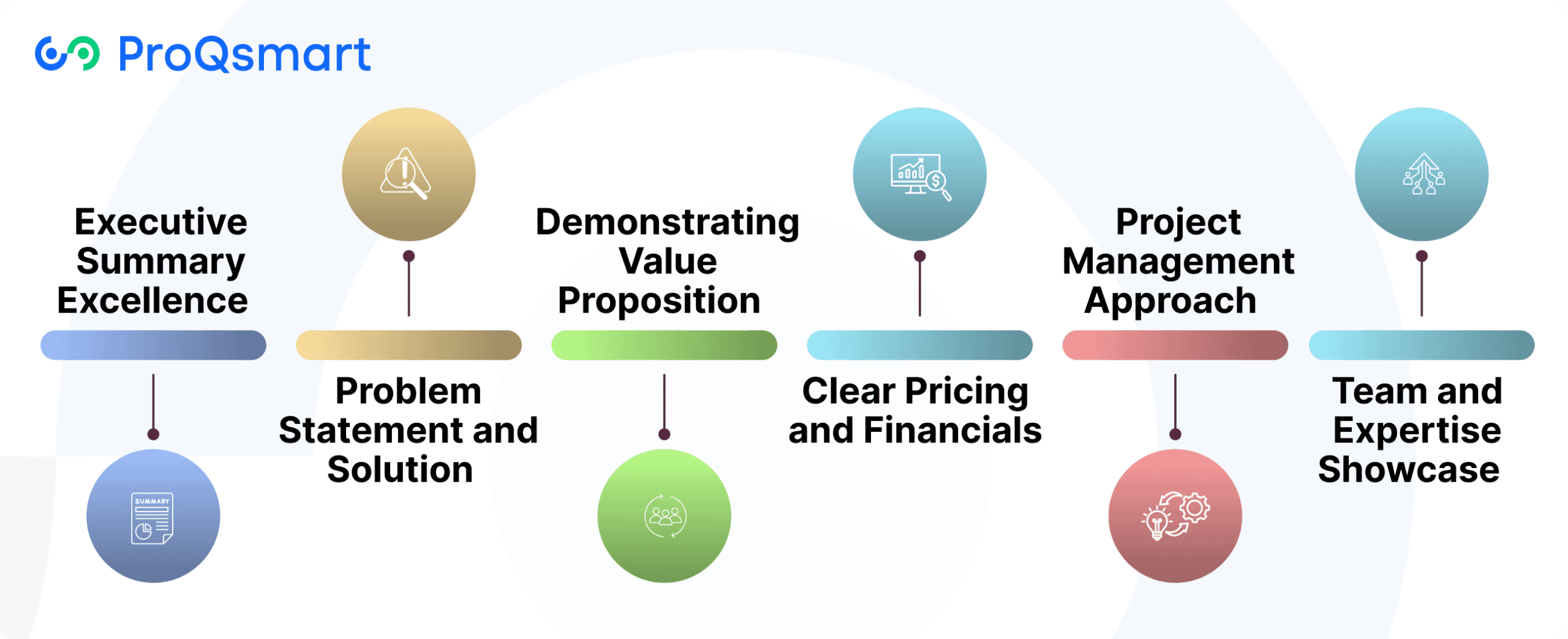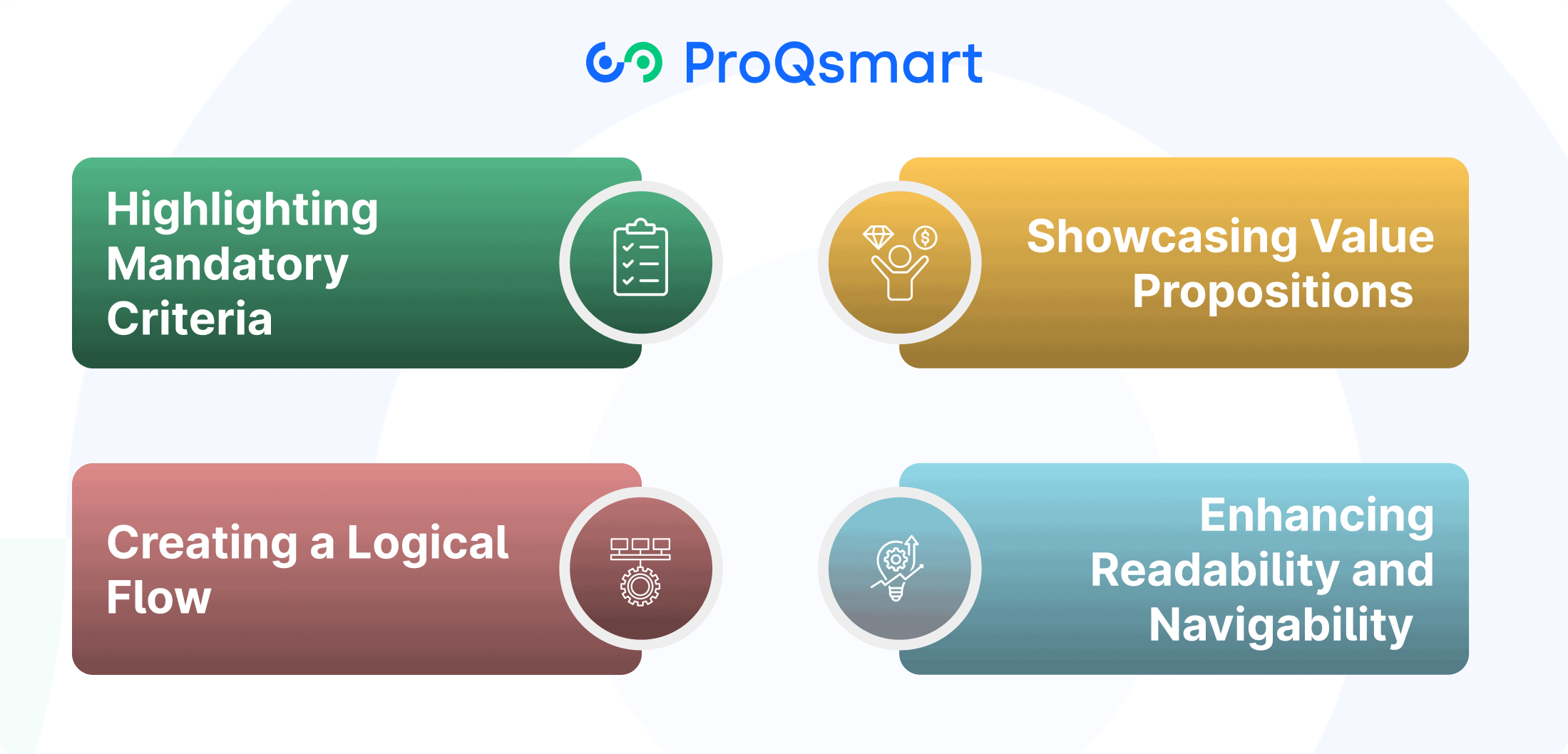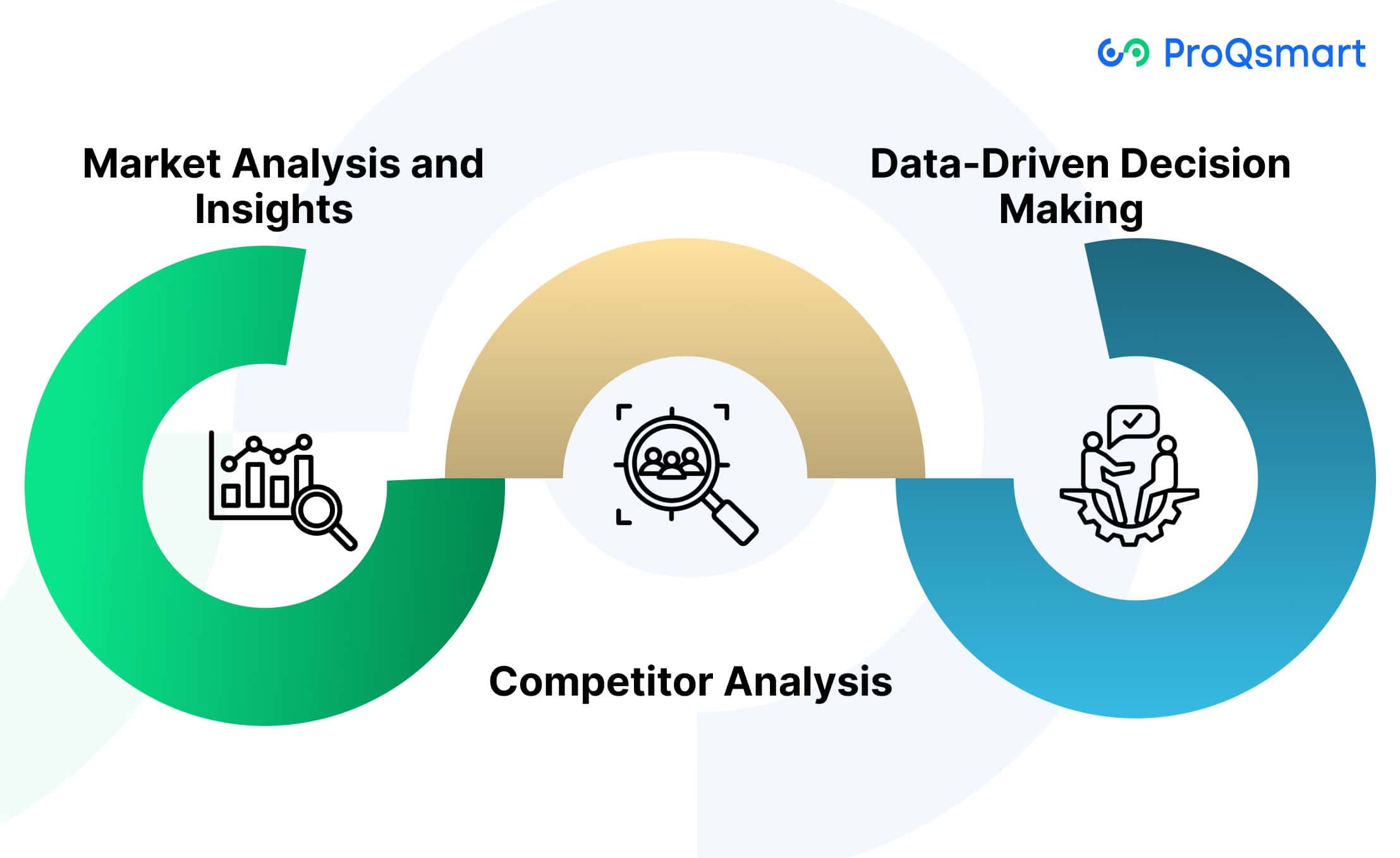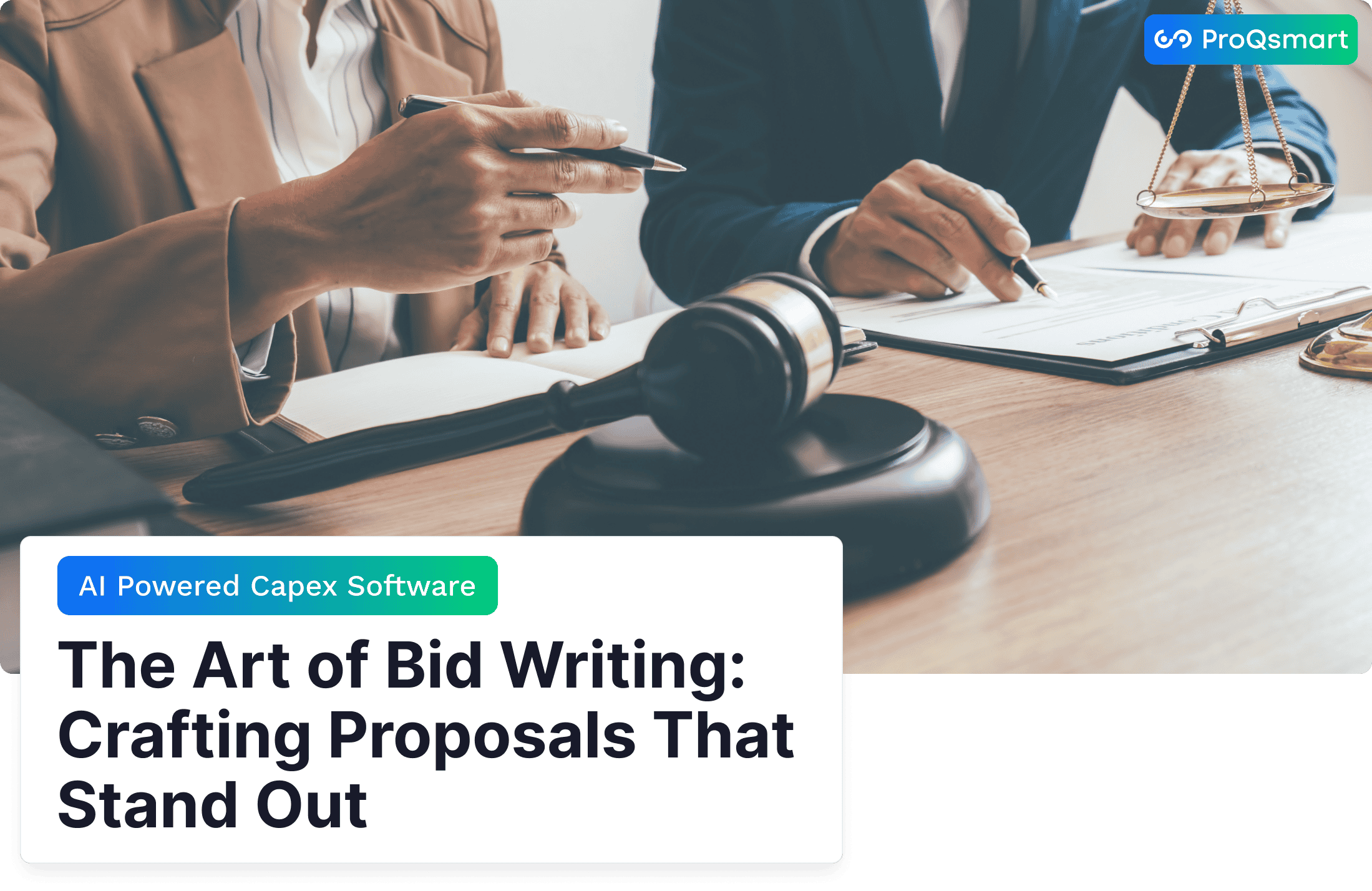Bid writing is about writing persuasive proposals. These proposals are used to win highly competitive contracts, partnerships, or funding opportunities from clients, organizations, or government agencies. As a result, you’ll produce effective, compelling, and communicative documents.
Each one will be carefully crafted to fulfill the narrowly defined criteria set forth in the request for proposal (RFP) or tender documents. A well-crafted bid is a reflection of your abilities and worth. Most importantly, it helps you showcase your superior understanding of what the client really needs to achieve.
Bid writing priorities – clearly write to comply and strategically present. This data-driven, focused approach is the key to winning new business opportunities and growing. In this guide, we’ll explore actionable techniques and proven strategies to enhance your bid writing process and improve your chances of success.
Understanding the Bid Landscape
The bid landscape is ever-changing, with the market, regulations and technology rapidly changing the landscape on a daily basis. Being attuned to these trends is critical in helping your organization shape competitive proposals.
With Social Value taking on a greater role, the bidders’ valuation metrics are changing. Now it’s a mere 10-20% of the overall scores. It demonstrates how fulfilling social and environmental impacts are becoming more essential components of bids.
AI and other digital tools are transforming every aspect of procurement. No matter the reason behind it, companies have to make moves ahead of these changes to stay competitive.
Key Players in the Bidding Process
The bidding process is all about teamwork — between a number of key players. Clients, who are usually employees of public or private entities, define the needs and judge the responses.
All bidders, whether they be SMEs or other big businesses, compete to make the best bid possible that meets the requirements of their clients. This clear identification of these needs, supported by tools such as ProQsmart, is the bedrock of effective bid writing.
With ProQsmart’s e-tendering capabilities, we were able to sustain up to 400 bids per year, maintaining a 75% success rate for our clients.
Procurement officers and bid managers are at the center of the process. Where procurement officers ensure compliance and the vendor meets requirements, bid managers work to develop proposals that deliver objective-oriented solutions.
Board members and executives must take an active role in influencing outcomes. They’re looking for bids that demonstrate value, innovation, and creative ways to meet their strategic goals.
Truly understanding that landscape means conducting a deep dive into research and engaging with all the relevant stakeholders. ProQsmart’s features, such as supplier performance monitoring and budget-driven procurement, equip businesses to navigate complexities and ensure their bids stand out in a competitive market.
Understanding Request for Proposal (RFP)
RFP, Request for Proposal, is the first step in the procurement process. It is the means by which an agency can expressly solicit input from the vendor community to compete on projects with well-defined scopes of work. An RFP is often used for projects with budgets greater than $25,000.
It promotes a clear and focused RFP process making it easier for vendors to tailor their solutions to your organization’s specific needs. Even with outside criticism claiming its death, the RFP is still an important tool, especially for more complex procurement demands. It takes the usual 6-8 week turnaround.
Having a strong grasp of the requirements described in an RFP, or request for proposal, is key to sidestepping misalignments that may result in lengthy negotiations. Ambiguities in the specifications, expectations of service, or roles and responsibilities can prolong negotiations, pushing out the timeline for project delivery.
Many organizations still go about the RFP process using legacy manual processes or email-based RFPs that slow down productivity. ProQsmart dives right into solving those pain points by automating workflows. It drives compliance and enables real-time tracking, so procurement can match procurement activities instantly with budgets.
RFPs help vendors develop custom proposals, enabling them to focus on demonstrating how their unique solutions will best address specific needs. Unlike RFIs that seek early-stage feedback, RFPs request in-depth responses, simplifying the overall vendor and provider selection process.
Platforms like ProQsmart revolutionize this process by automating e-tenders, subcontractor management, and supplier performance, providing an auditable trail that drives cost savings and transparency.
Essential Elements of a Winning Bid

Putting together a successful bid requires so much more than just answering an ITT. A successful proposal demonstrates a deep understanding of the client’s needs, aligns with their expectations, and clearly communicates your unique value.
Aim to feature the value added with each bid component instead of outlining the specifications. Make your statements tight and clear, and don’t forget the ITT formatting/style requirements. When evaluation criteria is sometimes weighted as much as 10–20% toward social value, it’s critical to include these aspects of your work in your bid.
Finding that sweet spot of clarity, transparency, and precision lays the groundwork for a winning submission.
Executive Summary Excellence
Need a more in-depth look at how to create a winning bid. Providing value includes client-focused messaging and alignment with client goals.
Additionally, include a market overview and competition analysis, showcasing your unique strengths, benefits, features, and USPs. Your approach to managing and delivering the project should also be summarized effectively.
The executive summary is your opening bid – you want to set the tone for their whole read. An evocative story grabs the client’s imagination and illustrates your confidence.
For instance, ProQsmart, with its AI-driven procurement solutions and real-time collaboration, exemplifies how technology can streamline processes while ensuring compliance and cost savings.
Problem Statement and Solution
Know the client’s problem and lead with it. Craft a compelling case with a strong narrative clearly detailing their challenges, supported by research from the ITT, and introduce your solution.
For instance, if subcontractor management is a pain point, showcase automation tools such as ProQsmart’s pre-qualification capabilities as a real-world advantage. Specific examples and carefully chosen case studies speak volumes to your credibility and can show your capacity.
Demonstrating Value Proposition
A compelling, focused value proposition is what sets your bid apart. Delve deep into defining the benefits you offer that set you apart, like improved transparency or increased cost efficiency.
ProQsmart’s budget-driven procurement and supplier performance monitoring are a great example of USPs that speak directly to client pains and needs.
Clear Pricing and Financials
Providing transparent pricing upfront fosters trust. Provide a comprehensive breakdown of costs, making sure you are in line with the client’s budgetary limitations.
For clarity and compliance’s sake, use a uniform format.
Project Management Approach
Develop a clear plan of action, including approaches such as Agile or Lean, to enhance your bid management efforts. A concise articulation of your strategy builds confidence in your bid writing skills and risk management capabilities.
Team and Expertise Showcase
Highlight qualifications and experience, including relevant certifications and industry-specific knowledge.
Demonstrating your expertise breeds confidence, leaving clients assured that you have the right experience to meet their needs.
How to Craft Compelling Bid Proposals
Crafting a strong bid proposal requires skilled bid writers to develop a clear strategy, rooted in understanding client needs and delivering value. A confident approach enhances bid management, making your proposal stand out and effectively matching the client’s expectations.
1. Know Your Audience
Above all else, though, know your audience. Start by focusing on what their most pressing needs are, as stated in an RFP, RFQ, or RFI.
For example, an RFP should require implementation plans and quality management while an RFQ might specify an emphasis on pricing. Use language and content that speaks to their key priorities and concerns. Tackling these pain points, such as budget considerations or tight project timelines, shows that you care and helps create a sense of trust.
2. Highlight Unique Selling Points
Write down everything that makes you unique. Deep specialized expertise, novel approaches to projects, or a track record of success.
Articulate these in simple terms, like providing AI-powered procurement via ProQsmart. To set your bid apart, specially highlight capabilities such as automated workflows or supplier performance monitoring that solve client challenges head-on.
3. Focus on Benefits, Not Just Features
Stop short at just describing your solution’s features. For example, instead of stating, “ProQsmart automates workflows,” emphasize the benefit: “ProQsmart streamlines processes, saving time and reducing errors.
When you frame your team’s features as client-focused benefits, that’s where you start to create a compelling narrative.
4. Write Clearly and Concisely
Above all, you need clarity. Stay away from jargon, and make sentences as simple as possible.
For example: “Our AI tools reduce costs by 20%.” Clear, direct prose enhances the flow, pacing, and energy of your proposal, making it harder for clients to miss your value.
5. Use Visual Aids Effectively
Visuals such as charts, diagrams, maps, or infographics improve comprehension and accessibility.
For example, use an easy-to-read graph to highlight how much money ProQsmart has helped save with its real-time monitoring. Make sure each visual adds to your narrative and doesn’t overwhelm the proposal with noise.
6. Tailor Content to Client Needs
Generic, one-size-fits-all proposals don’t cut it. Personalized content, like immediately addressing the client’s name and details of specific pain points, demonstrate care.
Solutions, such as sourcing for capital expenditure, should be aligned with their objectives on the project, for instance.
7. Address Client Pain Points Directly
Directly responding to challenges, like inefficiency in supplier management, demonstrates your capability.
Feature those solutions—like better supplier monitoring made possible through ProQsmart—so you can signal your ability to solve problems.
8. Showcase Relevant Experience
Showcasing relevant case studies or past projects helps establish credibility and authority in your field.
For instance, refer to positive collaborations facilitated by ProQsmart, highlighting the impact on the bottom line such as cost savings or increased compliance.
9. Quantify Your Achievements
Stories mean a lot, but data can really speak volumes. Whenever possible, use quantifiable metrics such as “Cut procurement cycle by 30%” to lend credibility to your statements.
Built-in success, quantified numbers offer measurable evidence of your success, making your proposal more persuasive.
10. Proofread Meticulously
Typos weaken the proposal’s professionalism and authority. Don’t stress, use an internal checklist to double and triple check the grammar, proper formatting, ability to read and follow directions, etc.
Compelling multiple reviews show commitment to accuracy and demonstrate attention to detail.
Best Practices for Bid Writing
Writing a competitive bid comes down to following basic best practices that help you present a clear, compelling, compliant, and professional bid. Follow these practices to increase your bid’s success rate.
In doing so, you’ll not only drive your firm to succeed, but stay ahead of industry standards and clients’ expectations.
Follow RFP Guidelines Strictly
Following RFP requirements to the letter is absolutely necessary if you would like to come across as organized, with high standards. From page limits and font size requirements to specific evaluation criteria, each RFP has its own unique set of requirements and expectations.
Writing too much or too little can disqualify your submission. For example, making sure that the ITT is returning to the IT institutional mandates, requirements, evidence, or appendices is of utmost importance.
To ensure you don’t miss anything, make a checklist to make sure each section is covered correctly. Tools such as ProQsmart make this much easier by managing all documents in one place and automatically organizing to keep you compliant.
Maintain Consistency in Tone and Style
Bid suggesting varied tone across a bid will leave an impression that the content is sloppy and unreadable. Don’t make jarring changes in tone, voice, or style that will throw off evaluators.
A consistent tone of voice goes a long way to reinforce your firm’s identity and professionalism. To do this, use consistent terminology and formatting throughout each section, focusing your narrative on how your message fits with the client’s priorities.
Ensure Compliance and Accuracy
Providing precise, truthful information upholds your organization’s credibility and can prevent disqualification. Otherwise, pricing errors or policy references mismatched with the stated scope of work will cost your bid.
Utilize a compliance checklist to ensure all requirements, like Social Value pledges or SWOT analysis discoveries are covered.
Include Supporting Documents
Additional materials, such as relevant case studies or bid proposal examples, add credibility. Keeping these documents in a tidy filing system can supplement your narrative, proving your bid writing skills and ability to succeed in the past.
Seek Feedback and Peer Review
Surveys of colleague feedback often highlight gaps in bid proposal writing. Internal or external peer reviews enhance your bid management efforts, making your content clearer and sharper before submission.
Structuring Your Bid for Success

A well-structured bid proposal is the foundation for winning procurement opportunities. By addressing mandatory criteria, showcasing value propositions, and maintaining a logical flow, skilled bid writers can significantly enhance your bid’s success rates and ensure compliance with the procurer’s expectations.
Highlighting Mandatory Criteria
Addressing mandatory criteria is not something negotiable in bid writing. Each part of the bid needs to match the procurer’s requirements as stated in the Invitation to Tender (ITT). If, for instance, the ITT asks you to demonstrate your commitment to carbon reduction, provide concrete data or documentation.
Strict adherence to formatting requirements, including word count or font size, is just as important. Failing to include these specificities can get your bid tossed in the trash immediately. At ProQsmart, we make this process easy by automating compliance checks, giving you peace of mind that each required requirement is covered without hassle.
Showcasing Value Propositions
Only then can you craft a value proposition that truly resonates with the client’s needs. For example, if the procurer is prioritizing Social Value, explain how you will create jobs or work on community outreach initiatives.
An effective value proposition will set your bid apart by addressing key pain points or matching the procurer’s objectives. With the help of ProQsmart’s AI-driven tools, you can identify what matters most to each client and craft your bid to stand out in those areas.
Creating a Logical Flow
A clear and logical flow will make sure that your bid is easy to read. For instance, start with an executive overview, and then provide a synopsis of each section dedicated to quality, cost, and compliance.
Whatever it is, arrange the entire content in a way that leads with your strengths. For example, ProQsmart automates workflows to simplify and connect various sections, such as managing subcontractors vs. Alignment with budget, to create an overall fetching structure.
Enhancing Readability and Navigability
An easy way to read bids originated with the television commercial sound bite proposal. Don’t write large paragraphs full of words.
With ProQsmart’s e-tendering platform you can structure your bids very easily so that evaluators can navigate them without difficulty.
How Research and Data Insights Facilitates in Crafting Proposals

Smart research and data-driven insights make all the difference in bid writing. When I have the opportunity to help shape this process, my focus is on getting in-depth research and data insights that meet client and industry needs.
This method is the key to keeping my proposals topical and fascinating. Surveys, for example, are great for logging hard data on client pain points, and interviews with project stakeholders give qualitative depth.
Market Analysis and Insights
Our market analysis of all potential competitors, financial backers, and collaborators combined with demographic studies and injury analysis lays the groundwork for developing proposals. This includes researching market trends, state and federal regulatory shifts, and new opportunities.
For example, if a construction firm seeks cost-effective procurement, identifying regional material cost trends can directly inform the bid’s financial strategy. You may collect this statistic from industry periodicals and public record databases. Weapons such as ProQsmart make e-tendering and capital expenditure significantly easier and even automatic.
Armed with these insights, I’m able to go beyond high-level claims to highlight how my solution connects with market realities and provides measurable wins.
Competitor Analysis
Researching your competitors helps you position yourself strategically in the bidding process. I take a look at their strengths, weaknesses, and unique value propositions. They all serve to help differentiate my proposal.
Tools such as compliance matrices and AI-powered validation offered by platforms like ProQsmart can streamline this process, ensuring that my proposal addresses gaps competitors may overlook. For example, automating the extraction of RFP requirements guarantees that every criterion is addressed with no room for human error.
Data-Driven Decision Making
Whether it’s informing the executive summary or demonstrating improved results, data is at the center of every decision made in a proposal. By employing AI tools, I validate compliance, flag risks, and quantify potential efficiencies, such as demonstrating a 20% improvement in workflow automation.
ProQsmart provides industry-leading transparency and real-time tracking capabilities. These benefits allow me to deliver concise, research-driven prose that enhances transparency and builds client confidence.
Conclusion
It isn’t enough for bid writing to sit down and write a good word on the paper. It’s all about demonstrating your worth, addressing your client’s needs, and separating yourself from the pack of competitors. Properly conceived with strong research, a clear structure, and focus on measurable outcomes makes all the difference. A new landscape of tools and technology offers up significant help. The true challenge is artfully crafting a proposal that hits all the sweet spots of the client’s objectives.
Each proposal presents an opportunity to learn and develop. With a more strategic approach and an eye on the market, you can continue to produce those successful outcomes time and again. Take these strategies and apply them right away, and watch your proposals begin to stand out from the crowd.
Ready to elevate your bid writing strategy? ProQsmart offers advanced tools designed to streamline workflows, enhance collaboration, and deliver winning proposals. Book a demo with ProQsmart today!




